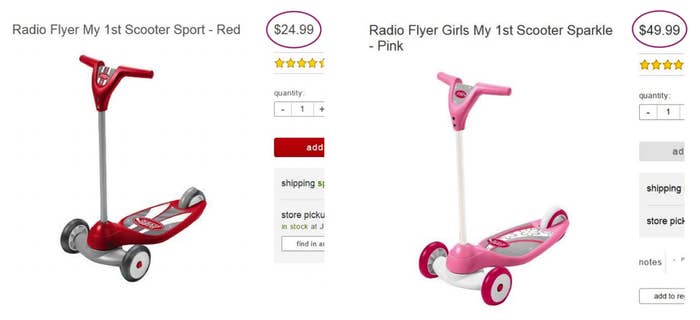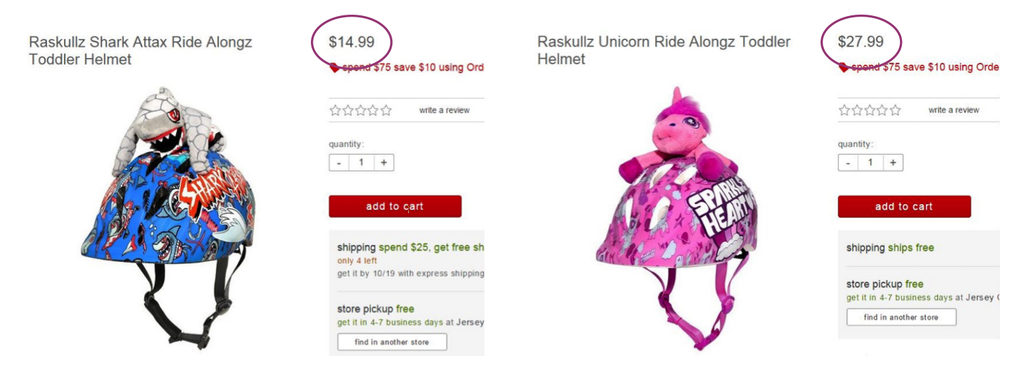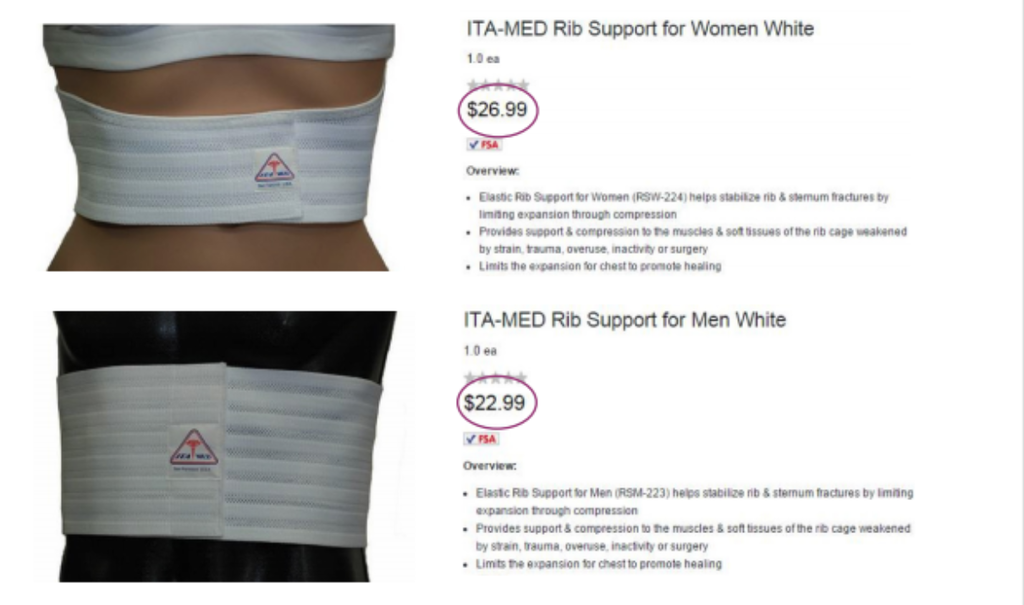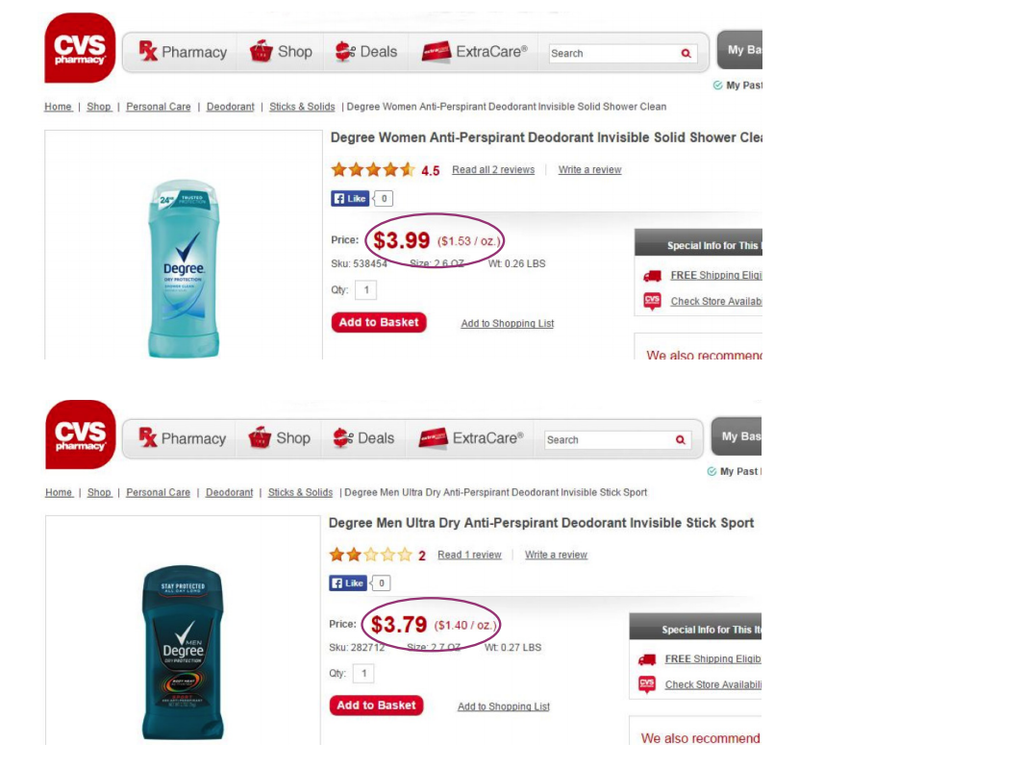
Not only do women get paid less than men, but it turns out they also get charged more for everyday goods.
A recent report from the New York City Department of Consumer Affairs found that, on average, products geared toward girls and women cost 7% more than similar goods for males. The agency, which analyzed almost 800 products from more than 90 brands sold in New York City, found that items targeting women cost more than the male versions 42% of the time.
The "gender tax," as the report calls it, starts in childhood, with pink, glittery helmets and scooters that might cost $13 to $25 more than similar items meant for boys. (The Washington Post noted that Target dropped the price on its Radio Flyer pink sparkle scooter to match a similar red sport one after the report came out, blaming the discrepancy on a "system error.") It goes on to appear in everything from razors to dress socks down the road.


The study's findings "suggest women are paying thousands of dollars more over the course of their lives to purchase similar products as men," the DCA said in its Dec. 18 report. "Though there may be legitimate drivers behind some portion of the price discrepancies unearthed in this study, these higher prices are mostly unavoidable for women."
Women face the biggest tax on personal care products, which cost an average of 13% more than those targeting males. The gaps on hair care items, razor cartridges, and lotion are especially egregious. Women pay an average of 8% more on adult clothing and senior and home health care goods — even on items as random as rib support bands.
A screenshot from the report shows a rib support band for women at Walgreens costs $27, versus $23 for men, prices which were still in place as of Tuesday.


The DCA looked at a wide variety of retailers for its study, including Walgreens, CVS, H&M, Toys 'R' Us, and J.Crew. The full list of items it analyzed is available online. It hopes consumers will share additional examples with the hashtag #GenderPricing.
"Individual consumers do not have control over the textiles or ingredients used in the products marketed to them and must make purchasing choices based only on what is available in the marketplace," the agency wrote. "As such, choices made by manufacturers and retailers result in a greater financial burden for female consumers than for male consumers."

